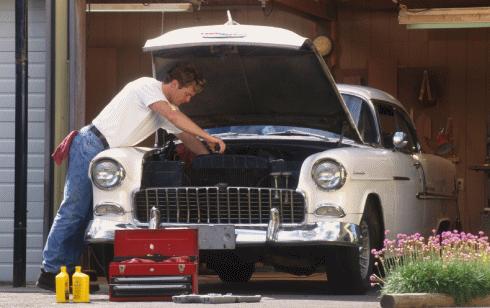Getting out of your current car always begs the question!
Traditionally, there are three ways that a person disposes of their car: it’s a leased vehicle and they return it to the bank it was leased from, or they own it and are looking to either sell it privately or trade it in. If you’re someone who’s looking to dispose of a car, how do you know what to repair before you do…if you repair anything at all?
For a leased vehicle, we are finding more and more often that bank charges for what is commonly called excess wear and tear is, most often, very reasonable for the ‘chargeable’ damage on the vehicle. That said, we find more than frequently that a consumer’s best bet when it comes to damage on their leased vehicle is to leave it alone. For someone who’s not sure, most banks are now offering lease end inspections services that come free of charge, that if done early enough give the lessee the ability to make repairs prior to their lease return date. Note: these services are free, but the companies performing these inspections tend to book heavily. Schedule your inspection early. And, don’t forget that come lease end, you don’t always have to return your car. You can sell it (and maybe should) instead!
For a vehicle that you’re planning to trade in, your instincts will tell you to make repairs before you have the car appraised for trade because you’ll want the car to be looking and running its best. Those same instincts will tell you that making the repairs will get you a higher value for your trade. Generally, following those instincts would prove to be a mistake as repairs made to the vehicle will not increase the value of the car commensurate with the amount that was spent on the repairs. Remember, when you’re trading in a car, you’re selling it to a dealer that deals in volume when it comes to repairs. What will cost you $500 will likely cost them $300 or less, so you’re better off taking a ‘hit’ to the value of the car than to make the repair. This way, you also don’t have to deal with the hassle of the time spent coordinating the repairs.
For a vehicle that you’re planning to sell privately, you’re better off to make repairs, cosmetically and mechanically, before you sell the vehicle. Making a car look and run as best as is financially possible will assist you in commanding a higher price when it comes to the private sale of your vehicle. What sells used cars is curb appeal, so the better your car looks, the better off you’ll be. In addition, when a buyer is looking at a car and finds something wrong with it, aesthetically or mechanically, they’ll estimate on their own what it will cost to repair and then ask for a price reduction commensurate with that repair, and usually with a buffer for their inconvenience of having to make the repair. This means that, generally, you’ll reduce the price of the car more than you’d have paid having made the repair. Additionally, when a buyer sees things that need to be repaired, they’ll be led to believe that there are others which could deter them from the purchase all together.
We’re experts when it comes to used cars, and what’s necessary to get them sold or returned. We know the ins and outs of what will help you to best dispose of your car. We’ll even tell you which of the above options will suit you and your situation best, and will provide you with completely unbiased information so that you can make an informed and educated decision when it comes to selling or turning in your car. We’ll even buy the car from you. Yes, we buy cars!
Questions? Call or email us and we’ll get back to you within 24 hours or on the next business day.






